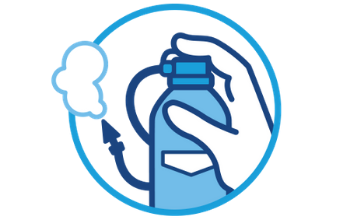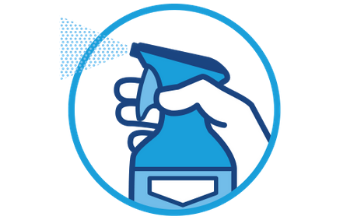Responsible Application


Protect the environment by understanding how to use pesticides properly
Pesticides are beneficial in that they protect the environment, curb human health threats and prevent damage. Applying and disposing of them correctly also protects the people, animals and plants that live in that environment. Here are some things you should know to help you use them responsibly.
Learn to read the label


Labels are the directions for using products safely and effectively. They are tools that have been refined over years and approved by Federal and State Regulatory Agencies. They ensure that users get the most from products, while most effectively protecting the environment. In order to use labels properly, you are legally obligated to read them to learn how to apply, when to apply, where to apply, and how to safely and responsibly dispose of products. This how to read a label article helps guide you on proper product applications. Remember, labels change based on updated product features, precautions and regulations. Using a pesticide in a way that does not comply with the label is illegal.
How to apply
Pesticide products come in four basic types; granules, aerosols, foams and liquids. Granules can be applied on large areas, like the lawn, or small areas, like around a rose bush. Aerosols and foams target tough to reach areas, many aerosols can spray upside down, while foams expand into areas like tunnels, cracks and wall voids. Liquids can be further divided into Ready-To-Use, perfect for targeting specific pests; Ready-To-Spray, ideal for larger areas; and Concentrates, where you mix your own solution to spray or pour. Applied according to label instructions, these products can deliver safe, effective results and offer you peace of mind.
Applying Granules


For large areas:
- Use a rotary or drop-type spreader calibrated to the manufacturer’s instructions
- Follow label directions for spreader settings
- Treat the border of your lawn first, then fill the center making parallel passes
For small areas:
- Measure granules according to label directions
- Sprinkle onto target area (i.e. base of plant)
- Water in
Applying Aerosols


- Determine target area or target pests
- Point and spray according to label instructions
Applying Foams


- Determine target area
- Pinpoint serpentine tunnels, holes, wall voids, etc. using application tip and spray
- Foam expands to fill target area(s)
Applying Ready-To-Use


- Identify target pest (i.e. insects, weeds)
- Check label to make sure pest is listed and follow application directions
- Set the nozzle, point and squeeze the trigger
Applying Ready-To-Spray


- Measure target area according to label directions
- Attach sprayer to a garden hose and turn on the water
- Push the “on” button with your thumb to release the spray
- Spray the entire area using slow, sweeping movements
- Walk backward to avoid stepping in treated areas
Applying Concentrates


For spray solutions:
- Measure target area or number of plants
- Measure Concentrate and mix with water according to label directions
- Use a tank sprayer to apply to target area
For drench solutions:
- Measure target area or number of plants
- Measure Concentrate and mix with water according to label directions
- Pour around target area
DID YOU KNOW?


Over-application can damage healthy plants.
Too much fertilizer can burn your lawn; too much nitrogen can make plant stems weak and spindly.
Avoiding spray drift
Spray drift occurs when a pesticide leaves its intended target and travels through the air. It can unintentionally harm the environment and negatively affect desirable plants or insects. But a good steward can avoid spray drift by being smart.
Be sure to:
- Always follow label instructions – be sure to understand your sprayer settings
- Watch the weather – do not apply on windy days
- Use spray buffers – a simple sheet of plastic or cardboard can help prevent drift onto non-target areas
Avoiding run-off
As water moves on the surface or under the ground, pesticides can move with it. It’s called run-off, and it can pollute or damage environments. Responsible stewards reduce the risk of it happening.
Make sure to:
- Always follow label instructions – twice as much does NOT mean twice as good
- Watch the weather – do not apply when rain is in the forecast, or soils are heavily saturated
- Understand your soil – heavy clay or compacted soils are more prone to run-off than dry, sandy soils
- Consider the slope – hillsides and sites with erosion are more likely to experience run-off
Responsible disposal


Once you’ve made your application, what’s the next step? Proper and safe disposal. If you have unwanted pesticides, there are a number of approved waste collection programs. Find the ones in your area by contacting the National Pesticide Information Center (NPIC), an EPA-sponsored organization, or The Pesticide Stewardship Alliance (TPSA), which has information broken down by state. Or try ApplyResponsibly.org and search by zip code. Remember, never throw unwanted pesticides into your weekly trash.
In terms of excess pesticides during a specific application, remember:
- Proper measuring prior to application can prevent excess pesticides
- Excess material in its original package can be saved for future use
- If your excess has been diluted in water, finish applying on target sites – diluted material degrades in storage
- Never pour excess pesticides into sewers or drains








